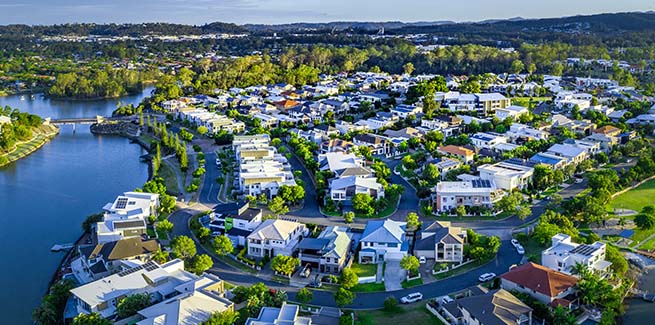The National Housing Finance and Investment Corporation’s (NHFIC) State of the Nation’s Housing 2020 report – which has produced five-year projections for housing supply and demand across Australia’s major cities and regional areas – has revealed that the “unprecedented” demand shock caused by the economic impacts of the coronavirus pandemic, will see new housing supply run ahead of new demand in many of the nation’s housing markets in the shorter term over 2021 and 2022.
According to the report, COVID-19 is expected to cause the largest negative shock to population growth since early last century, with almost one million fewer people than previously expected to be living in Australia by 2025.
This will see new demand for housing fall by 286,000 dwellings between 2020 and 2025, compared with the pre-crisis outlook.
The demand shock will leave the housing market with new supply exceeding new demand for the next two years.
The NHFIC stated in its report that it expects new supply to outpace new demand by 127,000 dwellings in 2021, and 68,000 dwellings in 2022, while cumulative new supply is expected to outpace new demand by 93,000 by the end of the five-year projection period after demand rebounds in 2023.
However, the report noted that this comes off the back of the market being in broad supply/demand balance between 2015 and 2020, with the housing market facing a prolonged period of undersupply in the early 2000s to the mid-2010s.
Once international border restrictions are eased, the report projects that supply would struggle to adequately meet the “rapid recovery in demand”.
It said that new demand could outstrip net supply over the rest of the projected period, with the supply-demand balance projected to fall to around 50,000 in 2024, before showing signs of recovery.
The report also said that despite record levels of residential construction over the years prior to COVID-19, supply outpaced demand by only 4,500 dwellings (on average) for the years 2017 to 2019.
Previous data suggests that prior to the uptick in residential construction in the mid-2010s, there was a cumulative shortfall of around 200,000 dwellings.
Across Sydney and Melbourne, supply is expected to exceed demand by almost 60,000 dwellings in Sydney, and almost 70,000 dwellings in Melbourne across 2021 and 2022, “with demand to soak up some of this supply beyond 2023”.
Compared with detached and medium-density housing, apartments have experienced a weak recovery in both demand and supply, with the report stating that demand and supply for apartments are not expected to revert to pre-COVID-19-crisis levels over the projected period.
In 2025, demand is expected to be two-thirds of 2019 levels while supply is expected to be almost half of pre-crisis levels, with the report projecting that it could fall back to levels not seen since prior to the apartment boom.
Commenting on the state of the housing supply and demand balance in Australia NHFIC CEO Nathan Dal Bon said: “The report shows that housing demand is projected to fall over this year and next due to the dramatic impact of COVID-19 on net overseas migration.
“This in turn is projected to result in new housing supply temporarily exceeding new demand. However, any cumulative excess supply could be negligible if effective vaccines are available earlier and international borders re-open sooner than expected.
“New housing supply could also be lower than projected if developers face greater difficulties in obtaining the level of pre-sales necessary to obtain project finance for new medium-to-high density developments. This follows much longer protracted periods of under-supply in the housing market.”
The NHFIC suggested that this lower period of housing demand due to the COVID-19 crisis potentially presents an opportunity to revisit housing policy frameworks (particularly planning frameworks) to ensure that policies can accommodate future population growth without adverse impacts on housing affordability.
[Related: Better borrowing power a boon for pre-Christmas sales]
 ;
;
